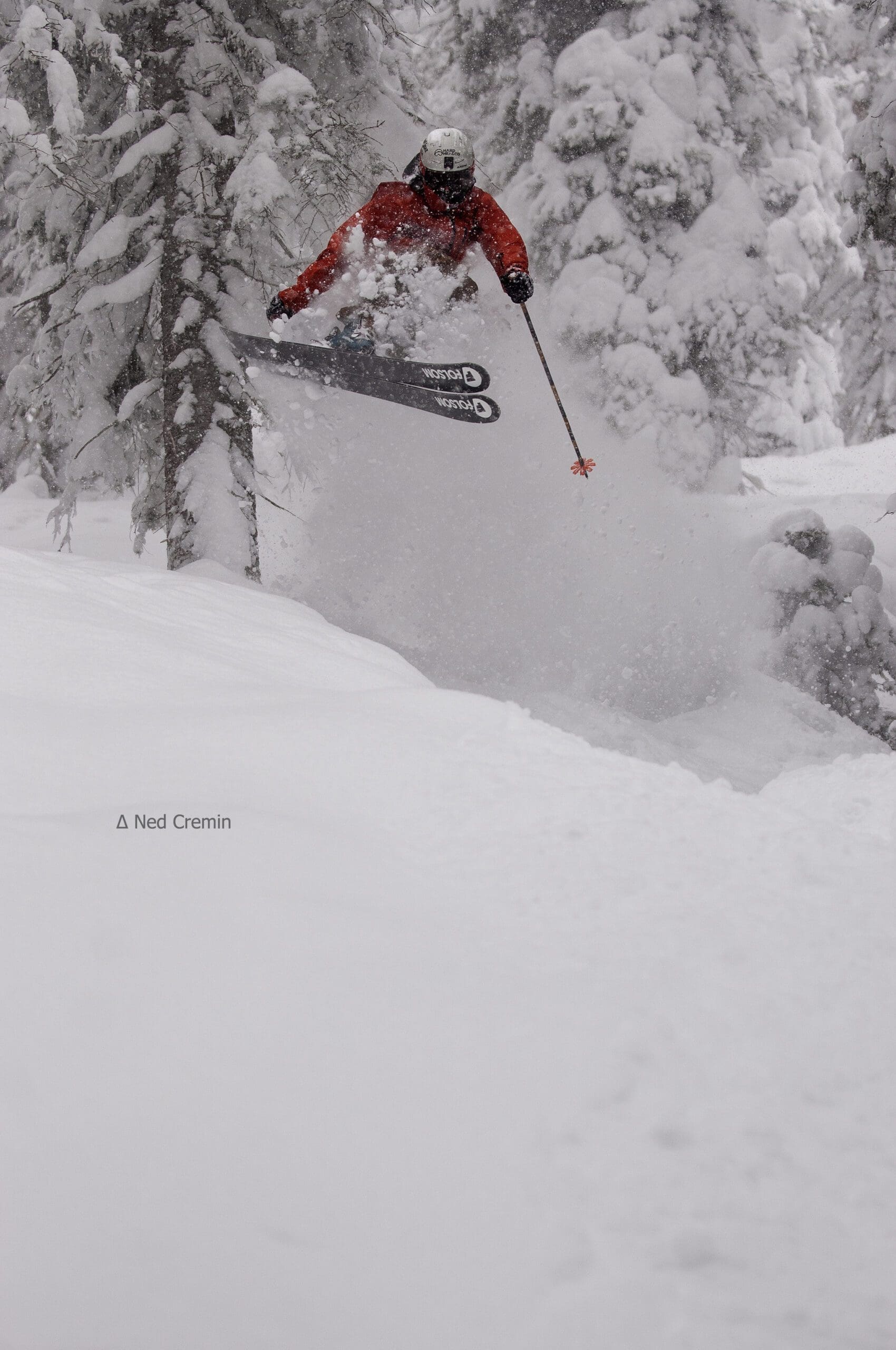When I travel down to ski in Bariloche, Argentina, it’s with the goal of skiing big lines, steep chutes, and amazing trees. Whether I’m enjoying resort skiing or the backcountry. Skiing in South America provides its own unique challenges and experiences; you could ski powder, ice, and windbluff, all in one day. With varying terrain and conditions in mind, stability and versatility are the biggest determining factors for me when choosing a ski.

When skiing in the backcountry my go-to ski is the Folsom Cash 117. This is a wider ski and allows for greater stability at high speeds, when the conditions aren’t ideal, as well as flotation when the snow gets deep. The Cash 117’s directional shape is crucial to executing at the highest level. Skiing the Andes mountains in South America, you will often be skiing wide open slopes, groomers, and fast chutes. You want to be able to power the front of the ski and have something to anchor you towards the tail. Pairing this ski with a maple core and Folsom’s directional rocker creates a stable weapon that’s ready to attack the mountain from any angle!

When it comes to resort skiing, my favorite ski to utilize is going to be the Folsom Primary 110. If you like narrower skis, the Primary in a 104 width is a great option as well. The 110’s shape lends to a very versatile ski that can handle wide open groomers as well as tight trees, moguls, and powder. It has a shorter turning radius compared to the Cash 117 which allows it to be more maneuverable, this makes the ski more playful. But, it is also crucial when the trees get tight and the slopes get crowded. This ski is a great match for my freeskiing style. The maple core creates a stiff and damp ski that gives me confidence when going fast or catching air. I pair it with our powder rocker profile which makes it excel in soft snow

With the weather in the Andes mountains being so variable and unpredictable, it is important to have good gear and outerwear. The most important features to look for will keep you warm, dry and comfortable so you can stay out on the mountain for longer. It starts with a good base layer. I love my base layers from Point6. Their merino wool is the best in the market and does an incredible job at wicking moisture to keep me dry all day long, whether I’m bootpacking/skinning or even during spring skiing. Their material is lightweight, super soft, and easily washable.
When in South America, and skiing in general, layers are the key. I recommend using shells as opposed to insulated jackets. Shells allow you to properly choose your layers to adapt to the weather and can be changed throughout the day as needed (like taking off a midlayer when it gets warm). I use The North Face outerwear, mainly because of their futurelight fabric that repels water like no other gear I’ve worn. It’s lightweight and provides tons of mobility, unlike a lot of waterproof and water resistant materials on the market that can feel stiff.
Goggle selection can feel like an afterthought, but a good pair of goggles can make a day of skiing. I use Zeal Optics and absolutely love their Automatic lens. These lenses adjust color and tint in changing light conditions, while also providing a big field of view. This allows me to only use a single lens and not be changing lenses multiple times throughout the day as light conditions change. If you carry a backpack, like I do, I always recommend bringing a spare lens that caters to the day’s specific weather forecast (sunny=polarized lens, overcast=low light lens).
Spread The Stoke.
Vicente Katz